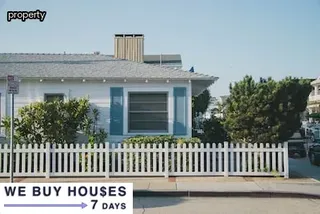In recent years, Minnesota has seen an increase in tenancy-related disputes brought to Conciliation Court. Disputes often arise when a tenant does not pay rent, damages the property, or otherwise fails to meet their obligations outlined in the lease agreement.
Landlords are often left feeling uncertain about how to protect their rights and interests when such conflicts arise. Fortunately, a Minnesota Landlord's Guide To Property Damage Disputes In Conciliation Court is available to help landlords understand the process and learn how to best protect their rights.
This guide provides detailed information regarding common tenancy disputes, relevant laws and regulations, and tips for successful resolution of disputes through Conciliation Court. Additionally, it outlines the consequences of non-compliance for both tenants and landlords, enabling them to make informed decisions that can ultimately resolve the dispute more quickly.
With this guide, landlords will be better equipped to handle tenancy-related disputes in Minnesota while minimizing potential losses.

When it comes to Minnesota landlord and tenant relationships, property damage disputes in conciliation court can be one of the most difficult and stressful activities to deal with. A key way to limit potential damage during a tenancy is to have clear expectations set out in the lease agreement.
This should include a description of the condition of the property when rented, as well as specific rules for any modifications that tenants may want to make. In addition, landlords should also provide regular inspections throughout the tenancy period and respond quickly to any signs of damage or disrepair.
Regular maintenance should also be carried out, as this will help prevent issues from escalating over time. Finally, communication between tenant and landlord is essential – both parties must remain aware of their rights and responsibilities under the lease agreement so that any disputes that arise can be addressed promptly and amicably.
Minnesota landlords should be aware of the causes of general wear and tear in their rental properties, as it can help them prepare for any disputes that may arise with their tenants in a Conciliation Court. In most cases, normal wear and tear is typically caused by everyday use of the property which cannot be avoided.
This can include things like minor scratches on walls, stains on carpets or floors, or faded paint that was caused by exposure to sunlight. These are generally not considered to be damages, but rather a natural part of aging and usage over time.
Other common causes of general wear and tear include nails being hammered into walls to hang decorations, minor plumbing repairs such as replacing washers, and replacing light bulbs when they burn out. Landlords should also understand that even if these types of damages were caused by tenants it is not considered to be malicious or intentional damage and therefore should not be disputed in court.

Understanding the life expectancy of property systems and functions is a key factor in Minnesota landlord's guide to property damage disputes in conciliation court. It is important for landlords to be aware of what type of damages may arise from the use of their properties and how long these systems or functions are expected to last.
For example, if an HVAC system is installed in a rental unit, it should be expected that it will need replacing or repairs after a certain number of years. Additionally, landlords should understand the typical lifespan of appliances such as refrigerators and washers/dryers and plan financially for future replacements.
This can help them avoid costly disputes with tenant's over damages due to normal wear and tear. Furthermore, understanding the general life expectancy of building materials such as paint, carpets, tile floors, and roofing can help landlords allocate funds appropriately for regular maintenance costs.
When it comes to recognizing tenant damage to rental units, landlords in Minnesota should be aware of the rules and regulations set forth by the Conciliation Court. It is important for landlords to understand that tenants have a right to make reasonable repairs to their rented space while they are occupying it, but they may not cause intentional or negligent damage.
Landlords should be familiar with what is considered normal wear and tear versus tenant-caused damage, as this will help them determine if a tenant can be held liable for any repair costs. To mitigate potential disputes, landlords should take pictures of the rental unit prior to occupancy and create a checklist with their tenants outlining any existing damages or issues.
If there is an unresolved dispute over property damage between landlord and tenant, then Conciliation Court can mediate the disagreement. Both parties must agree to have their case heard in Conciliation Court, which can provide a legally binding resolution without the need for costly litigation.

In Minnesota, landlords must take proactive measures to avoid legal disputes with tenants over property damage. One of the most important steps for landlords is to conduct thorough move-in and move-out inspections.
During a move-in inspection, landlords should document the condition of the rental property and review this documentation with the tenant. At the end of a tenancy, landlords should conduct a detailed move-out inspection to assess any damage that may have occurred during the tenancy.
If there are disputes about damages, both parties should try to reach an agreement without involving conciliation court. However, if an agreement cannot be reached between landlord and tenant, then Minnesota's conciliation court provides a legal avenue for resolution.
It's essential for landlords to be familiar with the process in order to maximize their chances of success in such cases. Landlords must also consider taking photos or videos of their rental units before and after a tenancy to provide evidence in court if necessary.
By making the most of move-in and move-out inspections, Minnesota landlords can reduce their risk of costly legal disputes related to property damage.
It is important for Minnesota landlords to have an effective security deposit system in place as part of their rental agreement. Security deposits protect landlords from potential property damage disputes that can arise with tenants in the future.
Having a well-structured security deposit system in place helps to ensure that landlords are protected in the event of any tenant damage to the rental property and will help avoid having to go through the process of filing a claim in Conciliation Court. Landlords should clearly state the amount of the security deposit, whether it is refundable, and when it is due in the rental agreement.
Additionally, landlords must provide written notice of any deductions taken from the security deposit within 21 days after termination or expiration of the tenancy. It is essential for landlords to keep accurate records such as photographs or an itemized list of existing damage prior to a tenant taking occupancy, and document any additional damages that occur during their tenancy.
Knowledgeable landlords understand that having an effective security deposit system can be beneficial if there arises a dispute with their tenant over property damage.

In Minnesota, landlord-tenant disputes over the return of a security deposit are typically referred to conciliation court. It is important for landlords to understand the laws in Minnesota related to returning deposits before appearing in court.
Under Minnesota law, tenants must be provided with an itemized list of damages and charges made against their security deposit within 14 days after they vacate the property. For any deductions from the security deposit, the landlord must provide evidence in writing, such as copies of receipts or invoices, that shows what was repaired or replaced and how much it cost.
Tenants have the right to dispute any deductions that have been taken from their security deposit and can request a hearing before a judge in conciliation court. Landlords should also be aware that all or part of a tenant’s security deposit may not be returned if there is damage beyond normal wear and tear or unpaid rent.
If either party wishes to appeal the decision of conciliation court, they must file an appeal with district court within 30 days of the ruling. The landlord needs to ensure they have sufficient documentation prior to going to court in order to prove any money taken out of a tenant’s security deposit was justified.
When it comes to drafting an effective move-out letter for a property damage dispute in Minnesota, it is important to ensure that all relevant information is included. Landlords should include the date of the move-out, the tenant’s name and address, and any pertinent details regarding the dispute.
It is also essential to provide clear instructions on how the tenant can respond if they wish to contest the claim. Additionally, landlords should be sure to include a timeline for when they need a response from their tenant or provide further evidence pertaining to the dispute.
Furthermore, landlords should verify that all state laws are being followed correctly and that all necessary documentation is ready before sending out a move-out letter. By following these guidelines, landlords can protect their rights in a property damage dispute in Conciliation Court and avoid unnecessary delays or misunderstandings.

As a Minnesota landlord, it is important to document any property damage that occurs during the tenancy. To ensure fairness and accuracy, all damages should be documented in writing.
This includes noting the date, time, and nature of the damage. Photos or videos can also be taken to provide additional evidence of the damage.
It is also a good idea to keep detailed records of any repairs that are made as a result of damages. In addition, the tenant should be given an opportunity to provide their own description of the damage and any mitigating circumstances that may have contributed to it.
All these documents can then be used during a dispute in conciliation court if necessary.
When it comes to property damage disputes in Minnesota, landlord-tenant law is very clear. It is important for landlords to know their rights when it comes to deducting damages from a tenant’s security deposit.
The best way to ensure that the tenant receives the correct amount of money back is to create an itemized statement of deductions that details exactly how much money was taken out for each repair or replacement made. This will help avoid any misunderstandings and ensure that the tenant understands exactly why their security deposit was reduced or lost entirely.
Landlords should be aware of what constitutes as a legitimate deduction and should keep all receipts and records associated with repairs and replacements in case they are ever needed during a dispute. Creating an itemized statement of deductions can help make sure that landlords are following all applicable laws when it comes to dealing with property damage disputes in conciliation court.

If a tenant decides to sue their landlord for the return of their security deposit, it is important that the landlord understand the legal process and how to defend themselves in court. Taking legal action may be necessary if a conciliation court dispute arises concerning property damage or unpaid rent.
The landlord should research Minnesota state laws and regulations regarding security deposits and prepare any evidence they may need to prove their case, such as repair estimates or documentation of payment for damages. It is also important that the landlord remembers that tenants have certain rights when it comes to disputes over security deposits, so landlords must be prepared to provide proof of damages and other expenses associated with the rental property before any money can be withheld from the deposit.
Even if a tenant has already sued for the return of their security deposit, landlords must still go through the proper channels to ensure that all parties are properly represented in court.
When it comes to disputes over property damage or unpaid rent, Minnesota landlords should consider using the tenant’s security deposit as a means of covering the costs. It is important for landlords to understand the process for filing claims in conciliation court, as well as how to maximize their chances of recouping all or some of the losses.
This can be done by making sure that all paperwork associated with the claim is submitted properly, including any repair estimates and photos that might help prove the tenant’s culpability in causing damages. Additionally, when submitting a claim to conciliation court, landlords should make sure they have proof of proper notification to tenants regarding security deposits and their rights under Minnesota law.
Finally, it is also important to have adequate documentation that outlines any agreement between landlord and tenant regarding security deposits and any potential deductions from said deposits if damages occur. Following these strategies will provide landlords with their best chance of recovering unpaid rent or damage costs in conciliation court.

As a Minnesota landlord, it is important to be aware of your rights in the court system when it comes to disputes involving property damage. Knowing the laws and procedures that are specific to the state will help protect you from any potential legal action.
According to Minnesota law, landlords must take conciliation court proceedings seriously, as this is the most common method for settling small claims disputes. Before commencing any dispute resolution process, landlords should familiarize themselves with their rights under Minnesota law.
Generally, landlords have the right to pursue damages against a tenant if a tenant causes damage beyond normal wear and tear of a rental unit or fails to make repair payments once they have been notified by the landlord. Landlords should also be aware of their rights when filing an eviction notice, such as providing adequate notice and following all required steps in order for an eviction notice to be legally valid.
Additionally, Minnesota landlords can expect tenants who fail to comply with lease terms or cause excessive damage to their rental property may face financial penalties or even eviction depending on the facts of each case.
When renting out a property, it is important for Minnesota landlords to be aware of their rights and responsibilities when it comes to property damage and disputes in Conciliation Court. In the event of a dispute over a security deposit return, landlords should document the condition of the rental unit prior to occupancy and provide proof that any deductions are due to damages caused by the tenant.
Landlords should also set clear terms regarding pet deposits, cleaning fees, and other deposits required at time of move-in. A written agreement outlining these details will protect both parties in case of a dispute.
Any damages should be documented with photographs or videos as well as receipts for repairs or replacements. Tenants must be provided with an itemized list of deductions from the security deposit within 21 days after they have vacated the rental unit.
At every step, Minnesota landlords must adhere to state law in order to ensure protection from negligence claims related to returned deposits.

Minnesota landlords must be aware of the laws that govern property damage disputes. In some cases, these disputes are handled in conciliation court.
The first step a landlord should take when a tenant disputes charges on their security deposit is to provide the tenant with an itemized list of damages and estimated repair costs. The landlord should also provide copies of any receipts for related work to prove the accuracy of their calculations.
If the tenant still disagrees with the amount requested, then it is time to move forward to conciliation court. During this process, both parties come together before a neutral third party mediator who will work with them to come to a fair agreement regarding the disputed charges.
To ensure success in this process, it is important for the landlord to remain organized by documenting all repairs and keeping records of communication between themselves and their tenants. This documentation can be used as evidence in court if necessary, so it is essential that landlords stay up-to-date on all relevant documents related to their rental properties and tenants.
When it comes to property damage disputes in Conciliation Court, Minnesota landlords have a few options available for recouping losses. In some cases, landlords may be able to recover damages from the tenant's security deposit.
However, if the damage is extensive or the security deposit insufficient, the landlord may need to pursue other means of compensation. A court order can often be obtained to force the tenant to pay restitution.
If the tenant fails to comply with a court order, a judgment lien can be placed on their property and assets that can be collected through garnishment of wages or bank accounts. Small claims court is another option for landlords looking to recoup losses from damaged property.
This court operates differently than other courts, requiring less paperwork and offering more simplified procedures for settling disputes and collecting damages. Finally, mediation is also an option for landlords who want an alternative dispute resolution method that does not involve going to court.

Going to court can be a stressful and costly process for both landlords and tenants in Minnesota. The good news is that disputes between tenants and landlords can often be resolved without going to court, through a process known as conciliation court. Conciliation court can help resolve tenancy-related disputes related to property damage in an efficient, cost-effective manner.
In this article, we will discuss techniques that landlords in Minnesota can use to effectively resolve tenancy-related disputes without having to go to court. One of the most important techniques is mediation. Mediation involves both parties sitting down with a neutral third party who helps them come up with mutually beneficial solutions to their dispute.
Another helpful technique is arbitration. This involves both parties agreeing on an arbitrator who makes a decision based on the evidence presented by both sides. Finally, landlord should consider using alternative dispute resolution (ADR).
ADR provides a forum for tenants and landlords to negotiate an agreement outside of court, with the help of trained mediators. By utilizing these techniques, landlords in Minnesota can successfully resolve tenancy-related disputes related to property damage in conciliation court without having to go through the expensive and drawn out process of going to trial.
When it comes to dealing with problem tenants, having a well-thought-out strategy in place is essential for Minnesota landlords. Understanding the basics of landlord-tenant law and knowing your legal rights is the first step towards developing an effective strategy; this includes familiarizing yourself with the state’s Conciliation Court system, which provides an avenue for settling property damage disputes outside of court.
It’s also important to be aware of the different tools you have at your disposal, such as eviction notices and lease termination agreements, so you can use them when necessary. Additionally, it’s wise to create a system for tracking tenant complaints and warnings, as well as document all pertinent conversations between you and problem tenants.
When confronted with a dispute or difficult situation, remaining calm and professional will help ensure that both parties are heard and respected. Lastly, stay up-to-date on new local laws regarding rental properties—this will make sure you are better prepared should any issues arise in the future.

It is important for landlords in Minnesota to understand their obligation to provide written notices concerning security deposits, as disputes over property damage can be taken to conciliation court. Landlords must document all damages that occur during the tenant’s occupancy of the rental unit, and the tenant must be given an itemized statement of all damages, with a list of repair or replacement costs, within 21 days after they have moved out.
This initial notification should also include a statement of any amount that will be withheld from the security deposit and the reasons for it. The landlord needs to provide a copy of this detailed list along with a refund check for any remaining security deposit balance within 14 days after the tenant has vacated.
If there are deductions being made from the security deposit for repairs or replacements due to property damage, then landlords must also provide tenants with copies of paid receipts which reflect the amounts charged for labor and materials associated with these repairs or replacements. Failure to follow proper procedures when dealing with a tenant’s security deposit can lead to costly penalties in conciliation court.
In Minnesota, the statute of limitations on property damage claims is six years according to Minn. Stat.
§ 541.05.
Property damage disputes between landlords and tenants may be handled in Conciliation Court, which is a part of the district court system that allows parties to resolve disputes without full-scale litigation. Generally, a tenant must bring the claim within two years of the alleged property damage; however, if there are multiple incidents that contribute to the same property damage claim, then the two-year timeline starts from when the last incident occurred.
In order to protect their rights, landlords should be aware of this two-year timeline for filing claims in Conciliation Court for property damage disputes with tenants in Minnesota.

In Minnesota, a landlord may be able to deduct from a security deposit in the event of damage to their rental property. According to Minnesota’s Conciliation Court, landlords have the right to make deductions from a tenant’s security deposit only when the damage was caused by negligence or intentional misconduct on part of the tenant.
Examples of deductions may include repair costs for any damages that exceed normal wear and tear, such as paint damage caused by tenants; cleaning costs for carpets or furniture that were not properly maintained; and replacement costs for missing items. Landlords should keep detailed records of all repairs made and replacements purchased related to property damage disputes.
Additionally, landlords should be aware that they must provide an itemized list of deductions taken out of the security deposit at the end of a tenancy, along with any remaining balance. To learn more about how to handle property damage disputes in conciliation court, check out Minnesota Landlord's Guide To Property Damage Disputes In Conciliation Court.
In Minnesota, normal wear and tear on a rental property is generally considered to be minor damages that are the result of everyday use by tenants. These can include things like minor scuffs, small holes in walls or carpets from furniture being moved, or fading paint from sunlight.
It is important for landlords to remember that normal wear and tear does not include damage caused by negligence, abuse, or intentional destruction. Landlords must take steps to document any damage done to the property prior to a tenant's occupancy so there is an accurate record of what was considered normal before the tenant moved in.
For more information on how to handle property damage disputes in Conciliation Court, Minnesota landlords should refer to the Minnesota Landlord's Guide To Property Damage Disputes In Conciliation Court.
Yes, a landlord in Minnesota can charge a tenant for carpet cleaning if they have caused damage to the property. According to the Minnesota Landlord’s Guide To Property Damage Disputes In Conciliation Court, landlords are allowed to pursue damages through conciliation court if a tenant has left the property in a state of disrepair or damaged it beyond normal wear and tear.
This includes carpet cleaning costs. If it is deemed that the tenant has caused damage to the carpet, then they are responsible for paying all associated costs.
The landlord must have evidence of the condition of the carpets prior to rental and proof that any damage was caused by the tenant in order for them to be able to pursue damages through conciliation court.
A: Under Minnesota law, leaseholders are typically responsible for any damage they cause to rental housing beyond ordinary wear and tear during a Periodic Tenancy or Sublease.
A: A property manager in Minnesota is responsible for ensuring that rental housing remains in good condition throughout the term of the lease and any subleases. The leaseholder, meanwhile, is responsible for any damage to the dwelling caused by them or their guests during a Periodic Tenancy or Sublease.

A: A landlord in Minnesota may pursue Small Claims Cases against an offender for damages, and may also file a lawsuit seeking compensation for any resulting losses.
A: A Minnesota landlord may take legal action against a tenant or sublessee who causes damage to their rental housing in Conciliation Court. The court will help the parties reach an agreement about how the leaseholder should be held responsible for any damages caused and what compensation should be provided by them.
A: A landlord may take legal action against a tenant for actual damages caused to the property in Minnesota. This includes sending notice of any claims by first class mail with postage prepaid.
A: The tenant is financially responsible for any damages they cause to rental property in Minnesota during a Periodic Tenancy or Sublease, and may be required to pay for repairs, as well as attorneys fees and court costs.